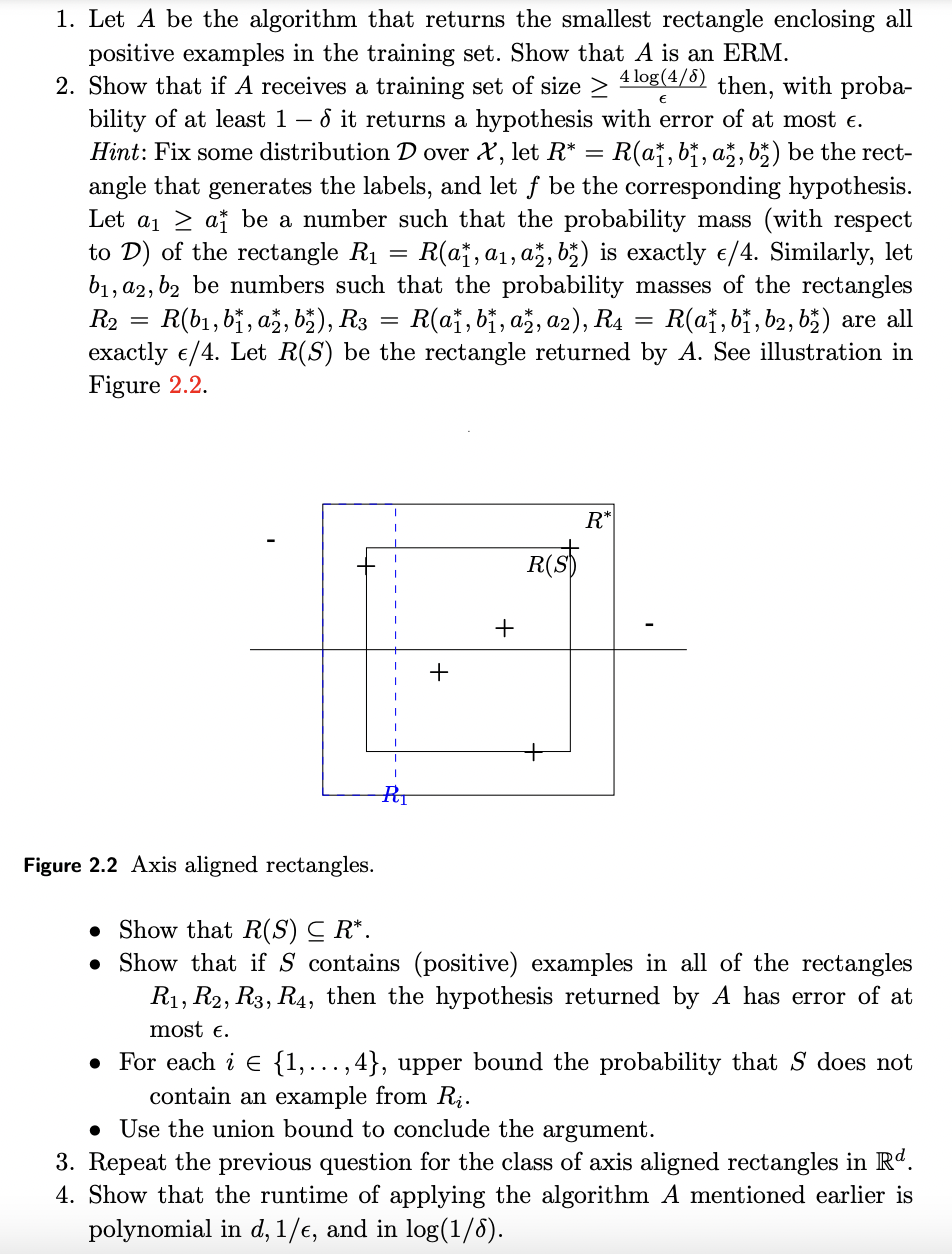Home /
Expert Answers /
Other Math /
axis-aligned-rectangles-an-axis-aligned-rectangle-classifier-in-the-plane-is-a-classifier-that-as-pa190
(Solved): Axis aligned rectangles: An axis aligned rectangle classifier in the plane is a classifier that as ...
Axis aligned rectangles: An axis aligned rectangle classifier in the plane is a classifier that assigns the value 1 to a point if and only if it is inside a certain rectangle. Formally, given real numbers , define the classifier by The class of all axis aligned rectangles in the plane is defined as Note that this is an infinite size hypothesis class. Throughout this exercise we rely on the realizability assumption.
1. Let be the algorithm that returns the smallest rectangle enclosing all positive examples in the training set. Show that is an ERM. 2. Show that if receives a training set of size then, with probability of at least it returns a hypothesis with error of at most . Hint: Fix some distribution over , let be the rectangle that generates the labels, and let be the corresponding hypothesis. Let be a number such that the probability mass (with respect to ) of the rectangle is exactly . Similarly, let be numbers such that the probability masses of the rectangles are all exactly . Let be the rectangle returned by . See illustration in Figure . Figure 2.2 Axis aligned rectangles. - Show that . - Show that if contains (positive) examples in all of the rectangles , then the hypothesis returned by has error of at most . - For each , upper bound the probability that does not contain an example from . - Use the union bound to conclude the argument. 3. Repeat the previous question for the class of axis aligned rectangles in . 4. Show that the runtime of applying the algorithm mentioned earlier is polynomial in , and in .

